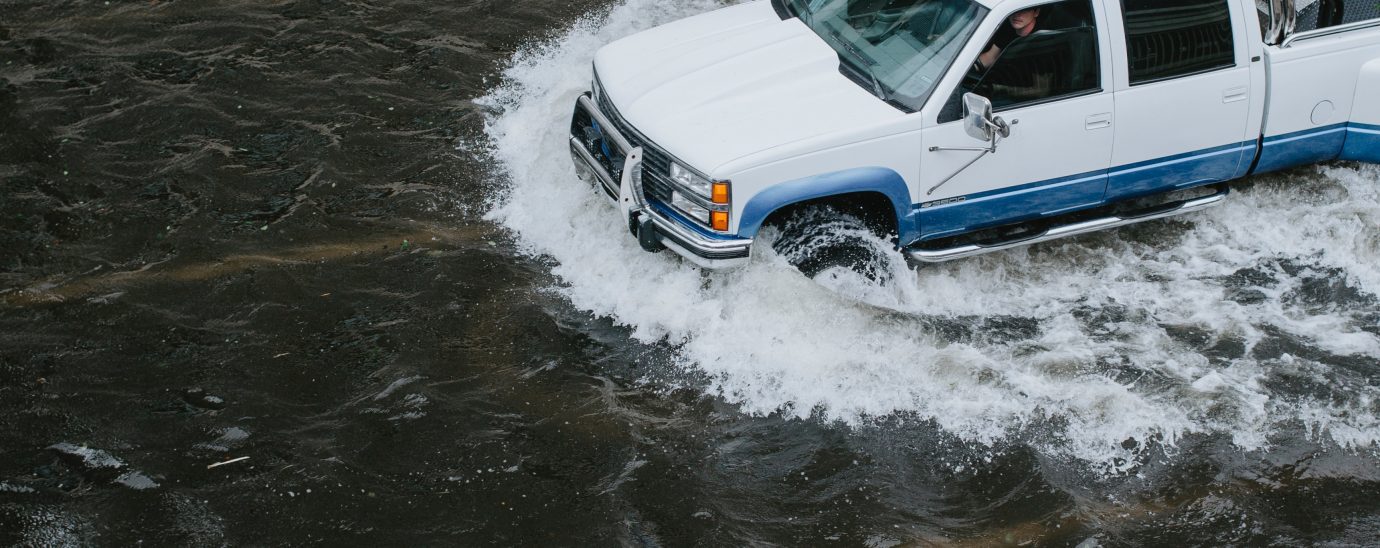Bouncing back from a natural disaster with resilience

In the last decade, we’ve seen some of the most extreme weather events since records began, all driven by our human impact on the plant. Businesses are rapidly trying to implement new green policies to do their part, but climate change has also forced businesses to adapt and redefine their disaster recovery approach. W. Curtis Preston, Chief Technical Evangelist, Druva, explores the ways that organizations can protect data and prep a disaster recovery plan ahead of a natural disaster.
There is no denying that our climate is dramatically changing. Extreme weather events are happening more frequently than ever before and sadly, everything from floods to major wildfires and long term droughts have come to be expected. In the UK alone, the last year has seen some of the warmest summers to date, followed by major flooding across the country in places such as London, Cumbria and Dumfries.
A recent UN report highlighted the ongoing climate crisis will warm the planet by an excess of 1.5°C, which will inevitably cause an increase in extreme weather conditions. This topic was of utmost importance at the recent COP26 UN Climate Conference, but delegates neglected to commit to staying under this vital number. Instead, countries pledged to keep global warming to below 2°C. Although this may be progress, as, before the summit, the planet was on track for a dangerous 2.7°C of warming, it won’t be enough to thwart an uptick of natural disasters in our near future.
The impact on businesses
Natural disasters are leaving organizations with extensive data losses and system outages, costing businesses millions of dollars in lost time and productivity. Take, for example, a business in London that stores its servers in its basement. All it would take to destroy those servers would be one significant flood. Or what about a business with its servers in California? The region has suffered devastating wildfires in recent years, which would quickly obliterate a company’s physical hardware.
Whilst everyone does their part to reduce the frequency of these events, knowing how to respond to an unexpected disaster could be the difference between the success and failure of an organization. Being unable to bounce back from a disaster is not something any business leader wants to happen. But the reality is that many companies have disappeared forever after a failed disaster – including 40% of small businesses. A comprehensive and regularly reviewed disaster recovery plan that can build resilience into systems will be key to avoiding this.
Planning for the worst
There are lots of different considerations that have gone into DR planning. The traditional approach was to keep physical backup copies of systems in a different location. This requires the business to lease or buy a data centre that they manage. The firm could then connect its production data centre to the standby data centre and replicate data between the two locations. For this to work, the hardware in the standby site needs to be very close to the same hardware found in the production site. When virtualization entered the scene, it made this a little easier, but the computing, storage, and networking power still needs to be very close.
However, taking this approach means hardware goes completely unused until a disaster strikes. This is a huge investment that requires significant costs for a “what if scenario.” Besides the huge waste from purchasing resources that only get used in a rare situation, those servers and storage arrays usually stay powered on and consume power every single day – which is inherently not very green.
Shifting to a modern cloud-first approach is becoming an increasingly popular alternative. The cloud is ready to go at a moment’s notice, businesses don’t need to pay for it until they need it, and they feel confident there won’t be a big dent in their bank account when a natural disaster strikes.
Using the cloud also has the inherent benefit that the servers it uses are located across a wide range of locations. So if one region, in particular, is suffering from a wildfire, earthquake or flood, business leaders can rest easy knowing that their data will be backed up and secure.
Weathering the storm
Ultimately every business disaster recovery plan will be different, but to achieve success, there are five steps all organizations should make sure they do:
- Identify the risks to protect against – businesses should be aware of the types of natural disasters that are common in their area, as well as additional risks such as ransomware attacks. They need to take those risks into account when designing their DR system, because it may help them decide certain aspects of the design, especially where they are going to store their DR copy.
- Establish a disaster recovery team – it is crucial to take note who will be part of the team to help execute the plan when an unexpected event occurs. Make sure each individual understands their role and what is expected of them.
- Adopt a cloud-native solution – as noted above, disaster recovery is a perfect workload for the cloud. It offers the scalability and performance necessary without the huge costs we’ve all traditionally thought of for DR. It allows businesses to store data far away to protect it from natural disasters, while also creating a digital air gap between computing infrastructures and recovery sites. But remember, not all cloud DR systems are the same, so carefully weigh your options and choose wisely.
- Never store all your data in one place – stick to the basics of the 3-2-1 rule here: three copies of data on two different media, one of which is stored somewhere else. Though an adage rule, it will never fail you.
- Perform a disaster recovery test – and test, test and test again. Rehearse large-scale recoveries to get a sense of how your DR system will perform during a disaster. You don’t want to be running through your recovery plan for the first time when you meet this moment.
READ MORE:
- The top 20 essential Docker container security practices
- Risk Before Popularity: 4 Factors for Determining Security Vulnerability
- Putting privacy and security at the heart of digital meetings
- Importance of AI in IoT Security
It’s a sad reality that extreme weather events are a regularly expected part of our lives now. But with the right tools and preparation, you’ll be able to rest easy knowing that your data and systems will remain resilient no matter what comes your way.
For more news from Top Business Tech, don’t forget to subscribe to our daily bulletin!
